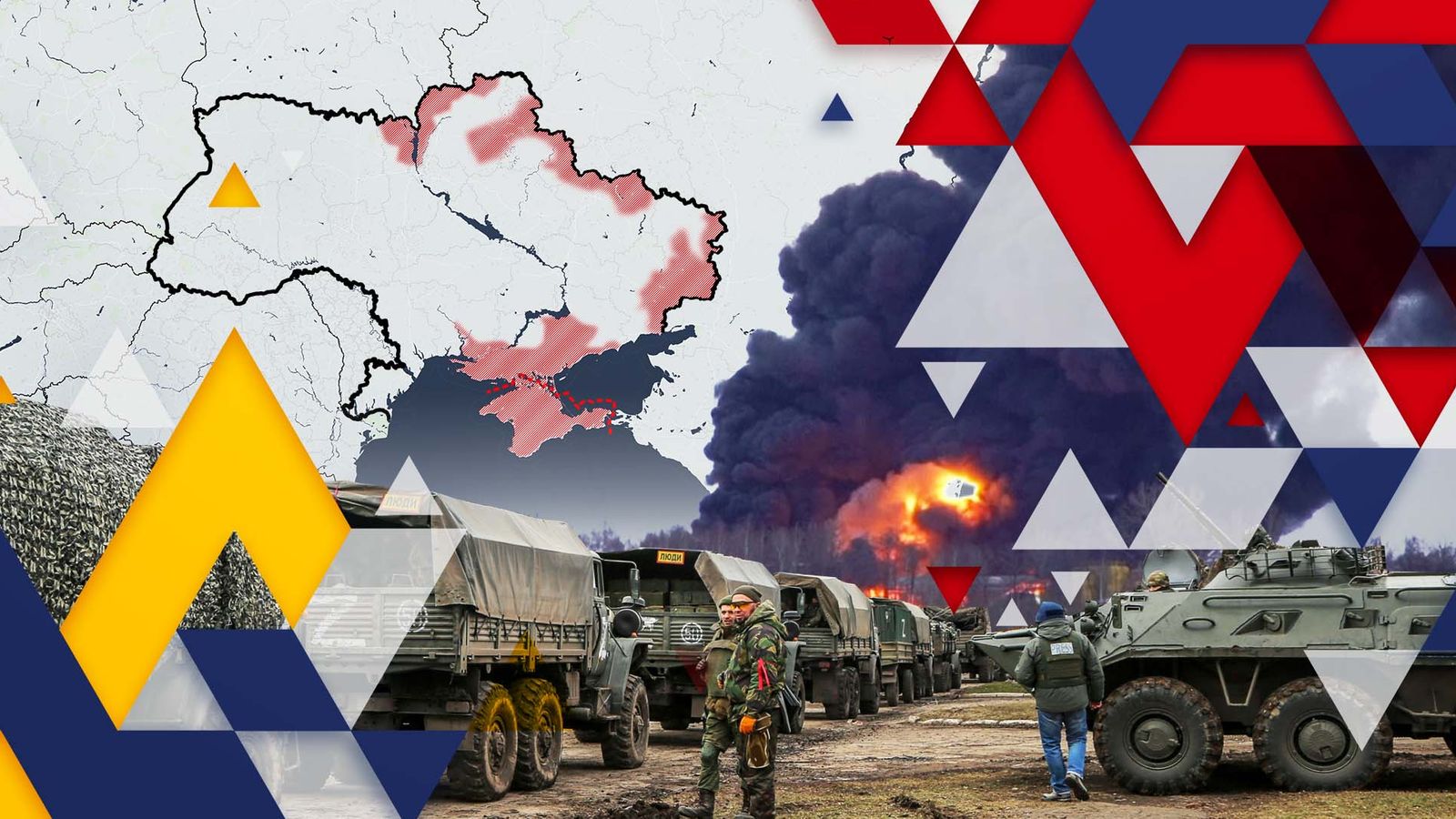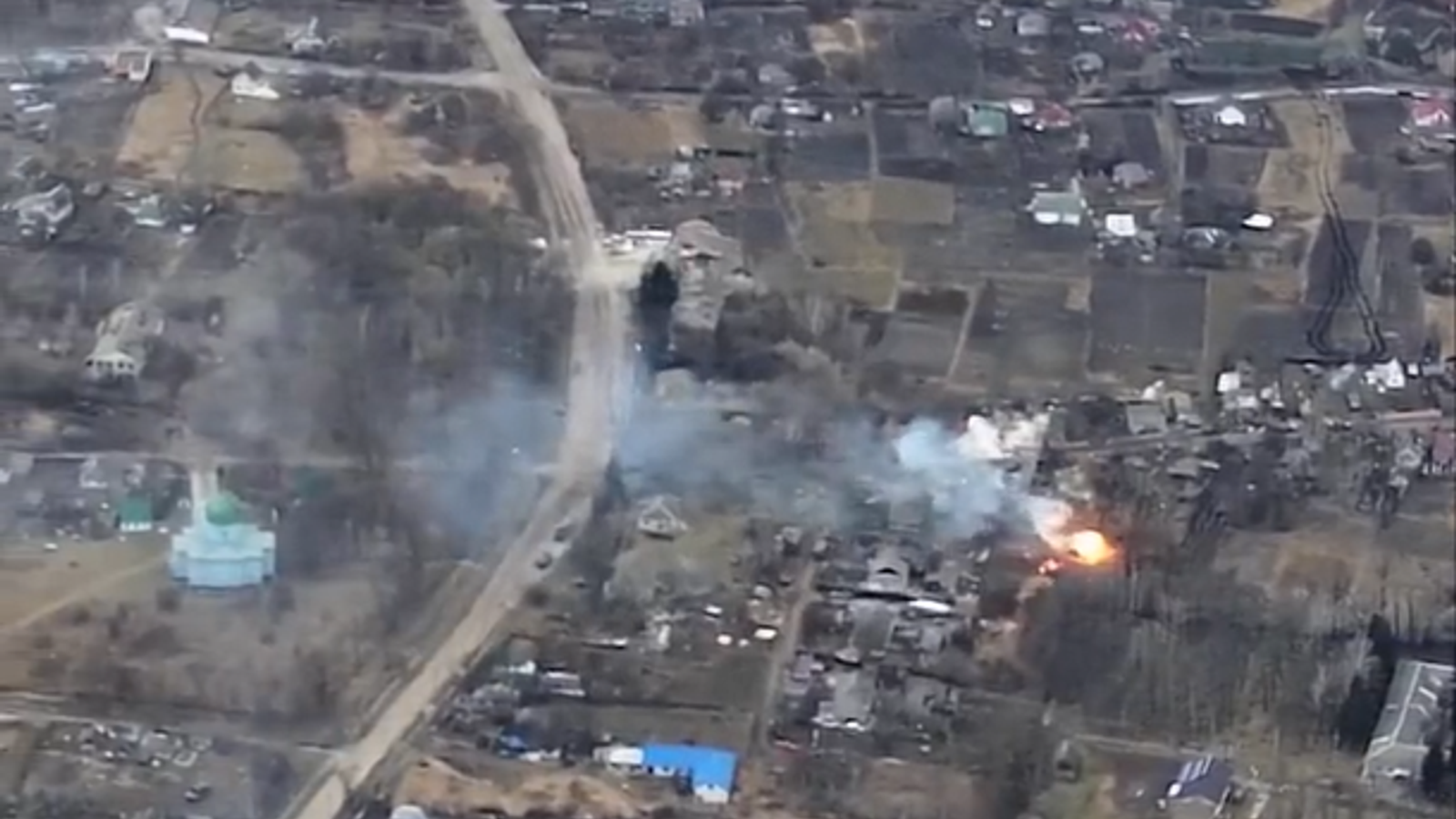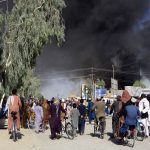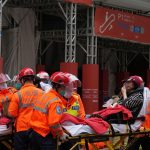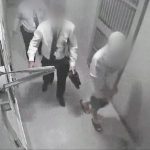Russian missile attacks completely destroyed an airport in Vinnytsia in central Ukraine, about 160 miles from Kyiv, as Russia continued its aerial bombardment of key Ukrainian targets.
A second attempt to allow 200,000 civilians to leave the southern city of Mariupol was again stopped after a few hours, after the city council said Russian shelling had made it impossible.
Russia had agreed to a ceasefire to allow civilians to evacuate.
The city, a key site in Russia’s aim to create a corridor of control between Crimea and the Donbas, as well as their aim to block Ukraine’s access to the coastline, has been under heavy attack since the very start of the invasion, 11 days ago.
This map shows the current situation in Ukraine, with those areas that Russia has control over highlighted red.
The south
Russia now has control over a significant amount of the south of Ukraine either side of Crimea, and is close to uniting forces from north and south on the eastern border near Kharkiv.
Professor Michael Clarke, a military expert and former director-general of think tank RUSI, said Russia would have been hoping to have already established that eastern perimeter in the opening two or three days.
Attacks on Odesa, a city of more than a million people and a significant tourist resort and economic centre, suggests that the next approach could be to move westwards towards Moldova.
The battle for Kyiv
Around Kyiv, we reported last week on the Russian convoy snaking along a 40-mile stretch of roads near to the capital.
Now, Sky’s defence correspondent Deborah Haynes says it appears that Russia are trying to bulldoze their way through the outskirts of the city as the convoy approaches.
Scroll through this map to see the latest from around the capital.
Last week the convoy was spotted occupying a 40-mile stretch of road between Hostomel airport and Ivankiv. At its closest point it was just 18 miles from central Kyiv.
There has been slow progress since then, which security experts put down to logistical issues such as food and fuel shortages and rumours about some tyres being ineffective for off-road driving.
Also, due to fierce Ukrainian defence, Russia has used more ammunition than anticipated, delaying a fuller attack until they can restock.
Today, Russia bombed two sites that we know of near to Kyiv, Irpin and Peremoha.
In Irpin, photos show civilians escaping heavy shelling as buildings burn. At least three civilians died after Russian mortar attacks on a bridge in the town being used by escaping evacuees.
Below is a photo of a strike in Peremoha, 40 miles from central Kyiv. According to military experts, it shows shots from two Multiple Launch Rocket Systems, a type of heavy-duty aerial attack weapon.
In green are the places where Russia is trying to make inroads closer to Kyiv itself, according to the Institute for the Study of War.
We should expect to see more of these in the coming days as Russia seeks to advance on those areas it has begun to flatten with aerial attacks.
The Ukrainian fightback
Professor Clarke says Ukraine lacks the forces to launch a complete counter-offensive, but it has been able to launch counter-attacks in places.
Hostomel is a good example of this. Russia had taken control of the airport on the first day of the invasion, with some of their most experienced airborne units, but Ukraine managed to win it back soon after and it has held since.
There have also been civilian protests against Russian control in some southern cities, highlighting how difficult it may be for this unwelcome Russian army to maintain order if they did manage to officially take over part or all of Ukraine.
Today there were five casualties as Russian forces opened fire on protesters in Nova Kakhovka, close to the city of Kherson which fell under Russian control on Thursday.
The battle for energy
One way in which Russia can begin to exert serious influence over the people, beyond military power, is by controlling resources that Ukrainians need. One of these is energy.
We’ve already seen internet outages across the country, and Russia cutting off electricity and water at times during the battle for Mariupol.
Ben McWilliams, an energy analyst at think tank Bruegel, says that Russia seems keen to control Ukraine’s energy infrastructure. This could tell us where in Ukraine Russian forces will look to focus their energies.
“These ports [near the Black Sea] are clearly something they desperately want to control,” he says.
Many coal mines are under the control of pro-Russian separatists in the southeastern Donbas region, so Ukraine relies on coal imports via the sea.
In the east and south of the country, hundreds of thousands of homes have been disconnected from the gas supply, according to Ukraine’s Gas Transmission System Operator.
The map below shows the gas pipelines running from Russia through Ukraine and towards its European neighbours.
If gas pipelines were targeted, Reuters reported that Ukraine would be able to continue supplying gas to households and critical infrastructure for up to a week, depending on weather and other conditions.
Ukraine stopped importing gas directly from Russia in 2014, as part of active steps to reduce its dependence on Moscow, but it still buys from European traders that source Russian gas through Ukrainian pipelines.
On 24 February, the day Russia first invaded, Ukraine had actually planned a test to see if it could support the system using only its own reserves for three days, as part of plans to switch to the European power grid by 2023.
As well as the largest nuclear power plant in Europe, in Enerhodar, which Russia took on day nine, they look to be advancing on another plant in the southwest near to Mykolaiv. Together, these facilities are responsible for one-third of country’s electricity generation.
If Russia is to truly exert power in Ukraine, sites like these will be key.
What’s happened so far?
– Day 1: Russia launches full-scale invasion
– Day 2: Russian forces reach Kyiv
– Day 3: Ukraine fights back in Kyiv, Russia gain in the south
– Day 4: Kyiv holds strong, heavy fighting in Kharkiv
– Day 5: Convoy grows around Kyiv as refugees flee
– Day 6: Cluster bombs hit Kharkiv
– Day 7: Civilian casualties mount
– Day 8: Mariupol is isolated as Russian forces create land bridge
– Day 9: Russian forces target Europe’s largest nuclear power plant
– Day 10: Ceasefire violated in Mariupol as bombing continues
The Data and Forensics team is a multi-skilled unit dedicated to providing transparent journalism from Sky News. We gather, analyse and visualise data to tell data-driven stories. We combine traditional reporting skills with advanced analysis of satellite images, social media and other open source information. Through multimedia storytelling we aim to better explain the world while also showing how our journalism is done.
